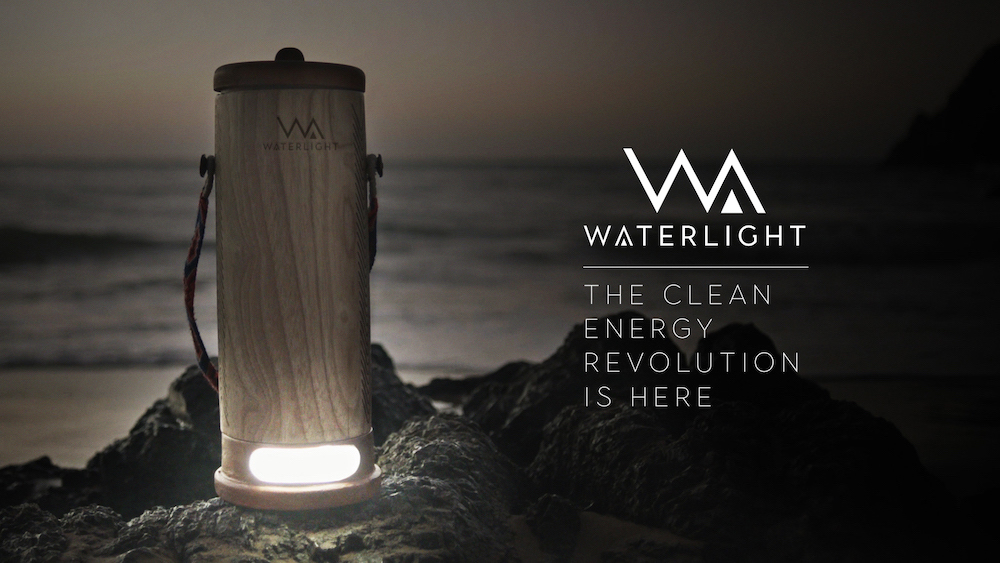Wunderman Thompson Colombia won a historic Design Grand Prix with a potentially life-changing device.
The revolutionary WaterLight, a device that converts salt water into electrical energy, was the star of a campaign developed by Wunderman Thompson Colombia for local start-up E-Dina Energy. The collaboration demonstrates once again that when creativity and technology come together, great things happen.
E-Dina, a small sustainable energy company of Colombian origin, only had a patent on ionization technology (a process allowing the conversion of salt water into electrical energy) when it met the creative team at Wunderman Thompson.
From there, a complex process began in which the agency took charge of shaping the idea until they created WaterLight, a portable device that uses salt water to create renewable, clean and sustainable electrical energy. The work included designing the product, its visual identity, usability, the optimization of materials and the engineering that entails the meticulous placement of the compounds inside it.
The result was a complete success: WaterLight was the winner of Epica’s Design Grand Prix, Wunderman Thompson’s second for Latin America in the history of the awards.

Daniel Payán, the agency’s chief creative officer, says: “E-Dina had a great idea at the patent level, but it was not made tangible, they were just prototypes without any kind of design or experience for the consumer. So we decided with the client to incubate the project and then accelerate it in terms of functionality. We were the catalysts that gave shape to the product, a name, a structure, an identity.”
He points out that the project responds to one of the main objectives of the UN agenda for 2030: find new sources of sustainable energy. “WaterLight is simple and powerful, without waste of any kind. It is made of wood and all its components are reusable. It can generate up to 45 days of energy with just half a litre of salt water and it lasts approximately 5,600 hours.” These advantages also allow for great scalability, he adds.
The development of the WaterLight was quite a challenge. Not only the design, which had to incorporate the technology into a product that could be launched on the global market, but also recording the audio-visual material that a worldwide launch entails.

During the creative process, the idea arose of visiting a Wayúu community, located in the Colombian region of Guajira, which due to its proximity to the sea would provide ideal conditions for testing the impact of the device.
These are families with ancestral roots and deep cultural traditions, but who live in situations of extreme poverty – a combination that allowed the agency to document how the WaterLight impacts people’s lives and how that inspired the final product design.

Felipe “Pipe” Ruiz Pineda, executive creative director of Wunderman Thompson Colombia, says: “Achieving acceptance and interaction with the product was a challenge, because this is a community that’s very closed to change. However, when interacting with WaterLight they realized it could improve and simplify their lives in many ways and that made everything easier.”
Shooting conditions were demanding, he recalls. “Everything was challenging: the temperature, which was 40ºC in the shade, filming in such a hostile desert environment, with wind and humidity; for us it was a consciousness cultural shock as creatives.” But, he adds, “very satisfying and enriching, a great lesson and an unforgettable experience”.
Today the Wayúu community continues to use WaterLight, which has in turn contributed to the evolution of the product as E-Dina continues to develop it, constantly adjusting each part and component.

In his role as chief creative officer at Wunderman Thompson Latin America, Daniel Minaker added that the agency considered it important to play a role in innovative projects and, above all, to be “agents for change”. He underlined the freedom that E-Dina gave the agency to develop the work, which undoubtedly contributed to its success.
“The Grand Prix made us extremely happy. This is the kind of project where you feel you’ve already won before participating in a festival. Along with other inclusion projects it positions Wunderman as the best network in the region. It’s a great joy for us to work with brands with a purpose because they are highly valued and, above all, welcomed.”
Finally, Daniel Payán noted: “Working to solve a problem that affects millions of people is inspiring. When we receive an award like this, it’s a guarantee that the path we’re taking is the right one.”
MARKETING Magazine is not responsible for the content of external sites.









